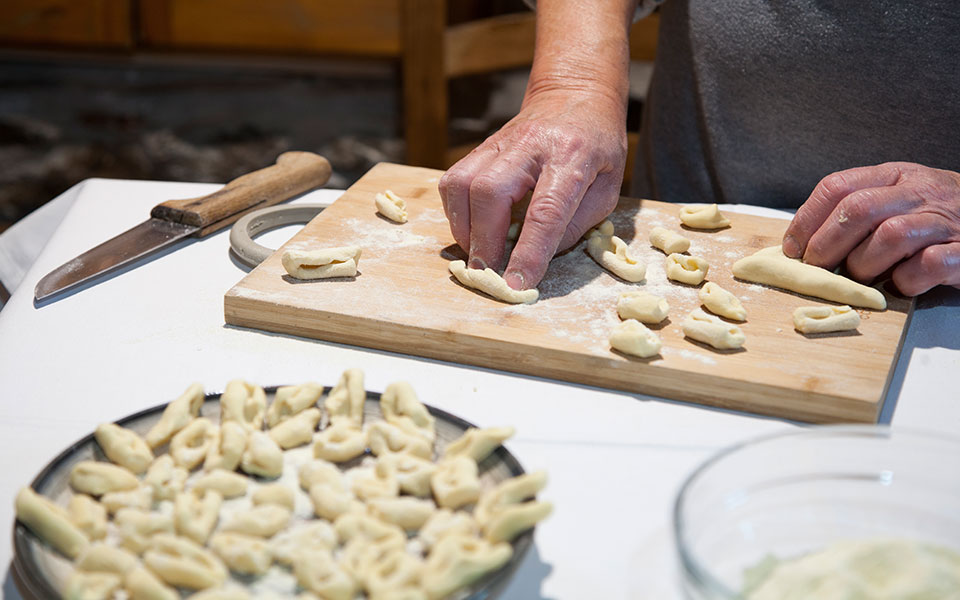Five Mountain Escapes for a Magical November
Discover five mountain destinations where crisp...

© Olga Charami
Built at an elevation of 300 meters on the western slopes of Mount Parnon, Geraki is not just any village. The old stone-built manor houses, the 19th-century shops, the narrow streets and the impressive entrance at Georgios Maroudis’ residence, built in 1907, which is twinned with the entrance to the Palazzo Durini in Bolognano, Italy, all reveal a unique identity, but there’s more – the village, which stands on a site of continuous habitation since the Late Neolithic Period (4400-3000 BC), offers a rare mix of cultural and historical elements.

© Olga Charami
For instance, if you climb up Dontakia Hill to the ancient acropolis, you’ll find the ruins of the city of Geronthrae, excavated by the Netherlands Institute at Athens. Alternatively, if you head outside the village on the road to Molai, you’ll come across the well-preserved medieval castle that was once a stronghold of the Despotate of Mystras. Scattered within the castle walls are some beautiful Byzantine churches with extraordinary frescoes, and there are more in the village proper.

© Olga Charami
About 1,400 people live here, and you’re more than likely to encounter someone who’s willing to tell you about the history of the place and perhaps even treat you to some local delicacies, since there is no longer a taverna in operation in the village. Among the fare you might expect to find are cabbage pies; “gogges,” a kind of handmade pasta made in the Peloponnese; and sano (“hay”), the wild greens that residents pick and dry to preserve them for year-round consumption.
Undoubtedly, you’ll also hear about the village’s famous woven kilims. Award winners at international exhibitions (Vienna 1873, Zappeion Panhellenic Exhibition 1888, and Thessaloniki 1968) and on the National Intangible Cultural Heritage List since 2019, these kilims, with their colorful wool threads and floral or geometric decoration, are woven on standing looms, not commonly used in post-Classical Greece. The evidence of textile activity here, found both at the ancient acropolis and in the Byzantine churches, testifies to the local people’s long relationship with this craft.

© Olga Charami

© Olga Charami
Today in Geraki, only weaver Chryssoula Stamatopoulou still works the loom, counting warp threads and helping others learn this local tradition. Traditionally, the art of weaving had been handed down from generation to generation within families; last year, for the first time, weaving courses were held, organized by the Peloponnese Region and Parnonas Development Region. Over the year, Stamatopoulou taught three separate 120-hour courses to a total of 45 women and men. A fourth course is starting soon and, in the autumn, a two-year School of Weaving is expected to open in Geraki, in collaboration with the University of West Attica.
Discover five mountain destinations where crisp...
Discover Pyrgi in Chios, a medieval...
Just a short distance from Athens,...
One of the most rewarding road...